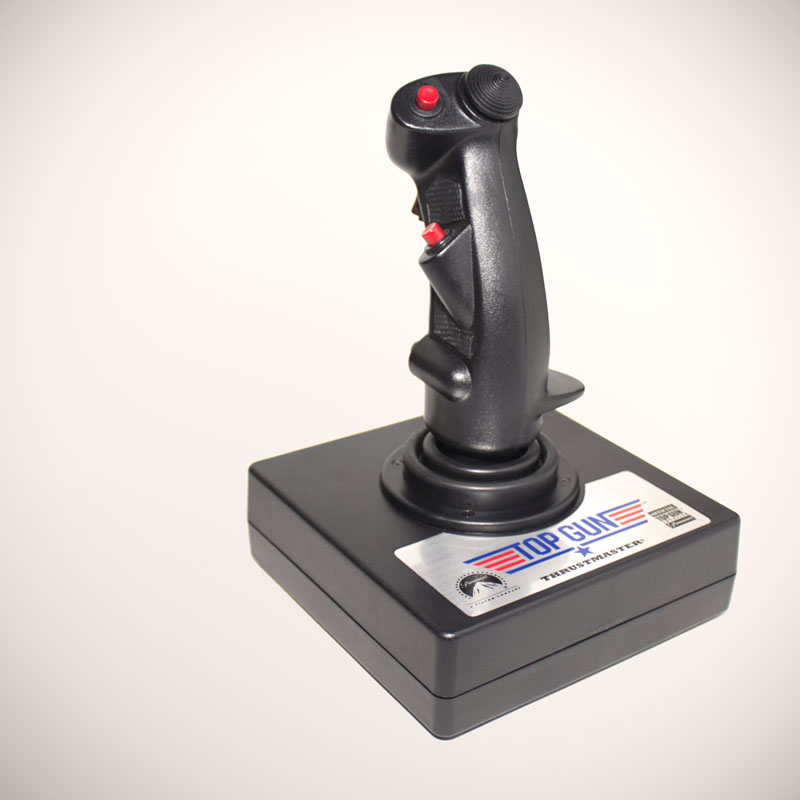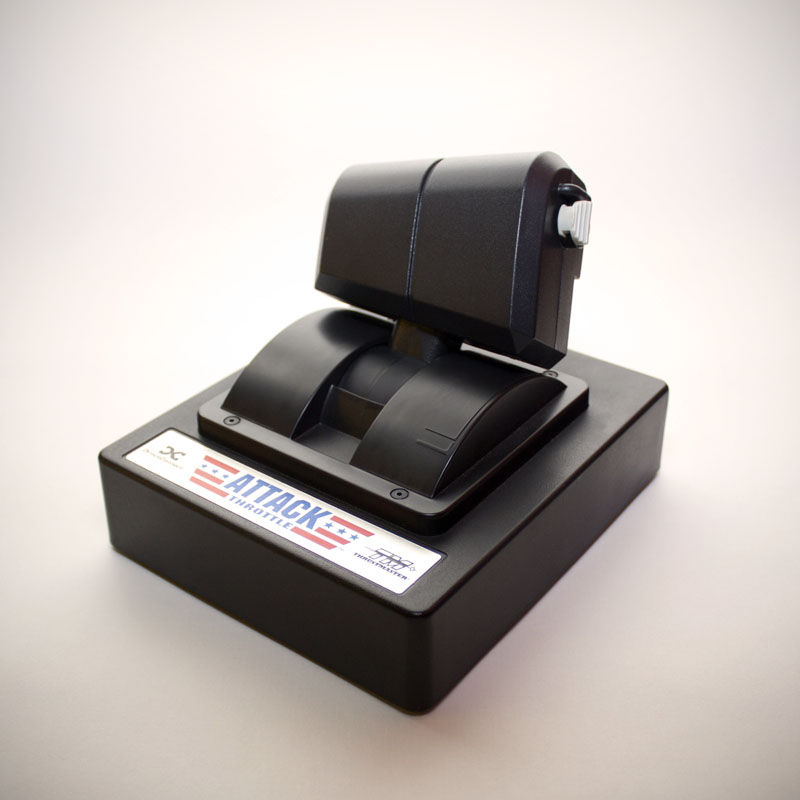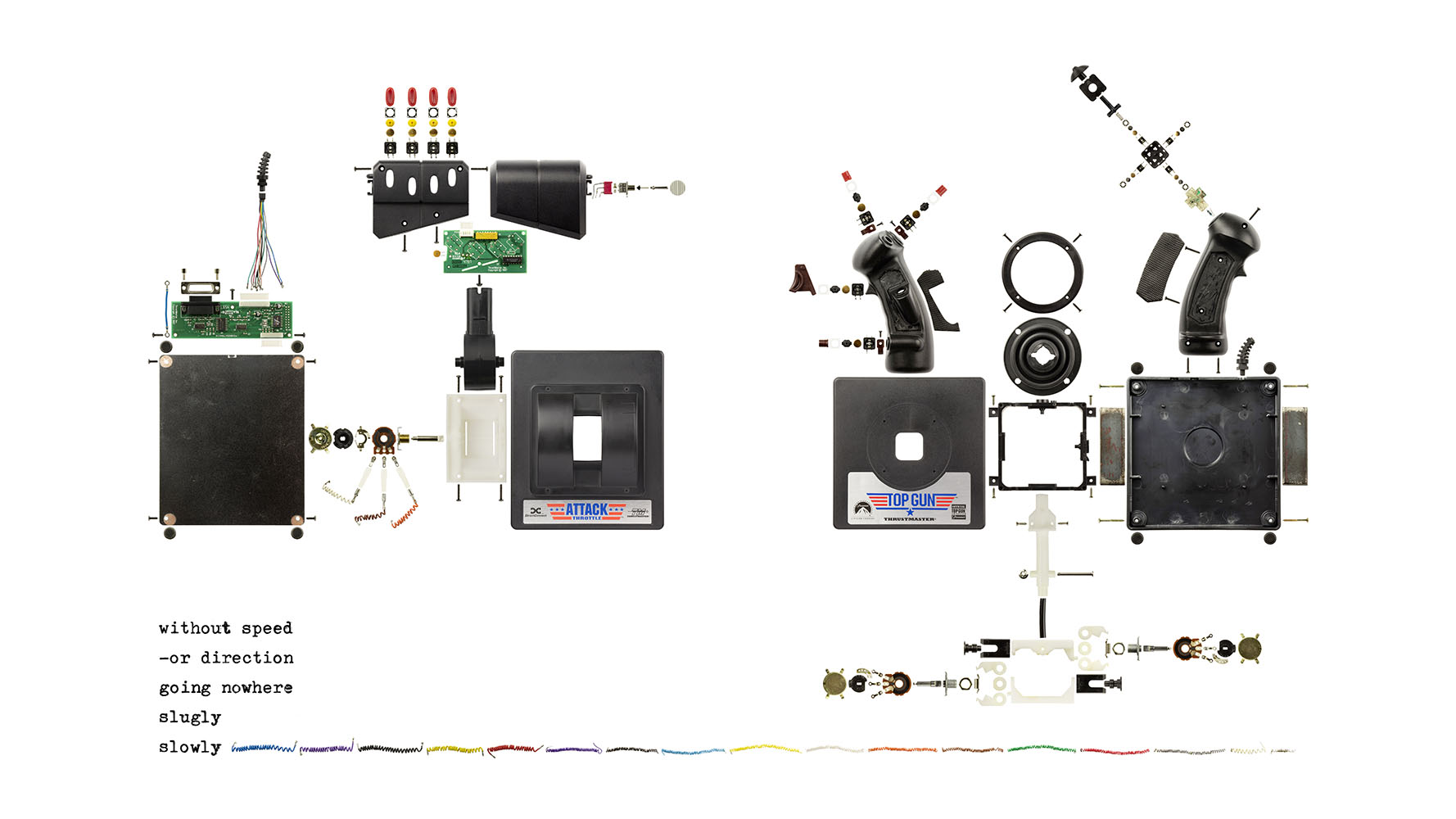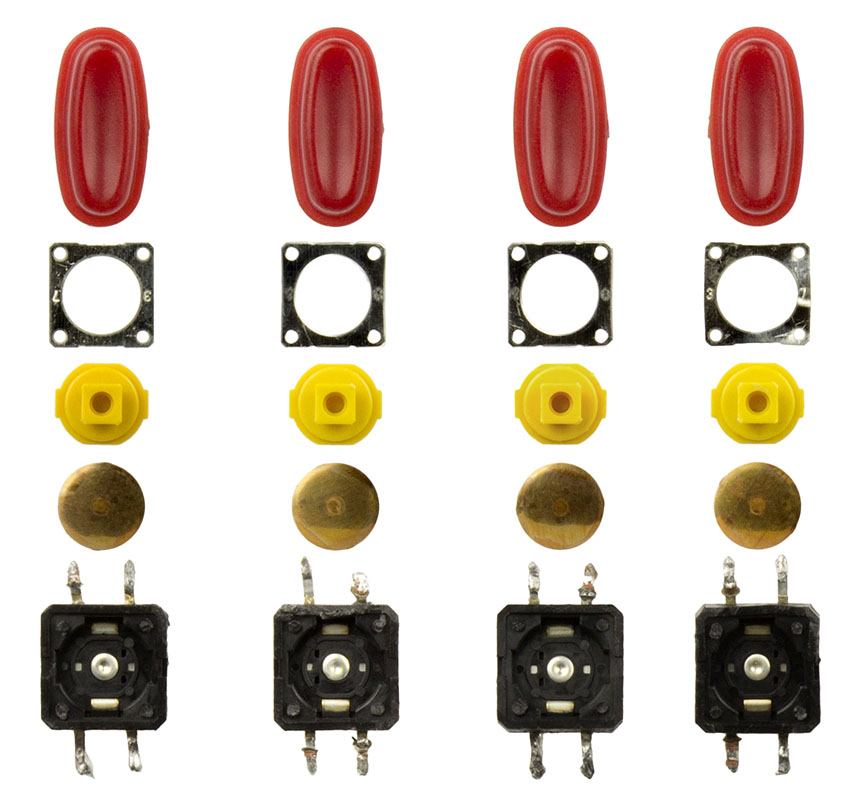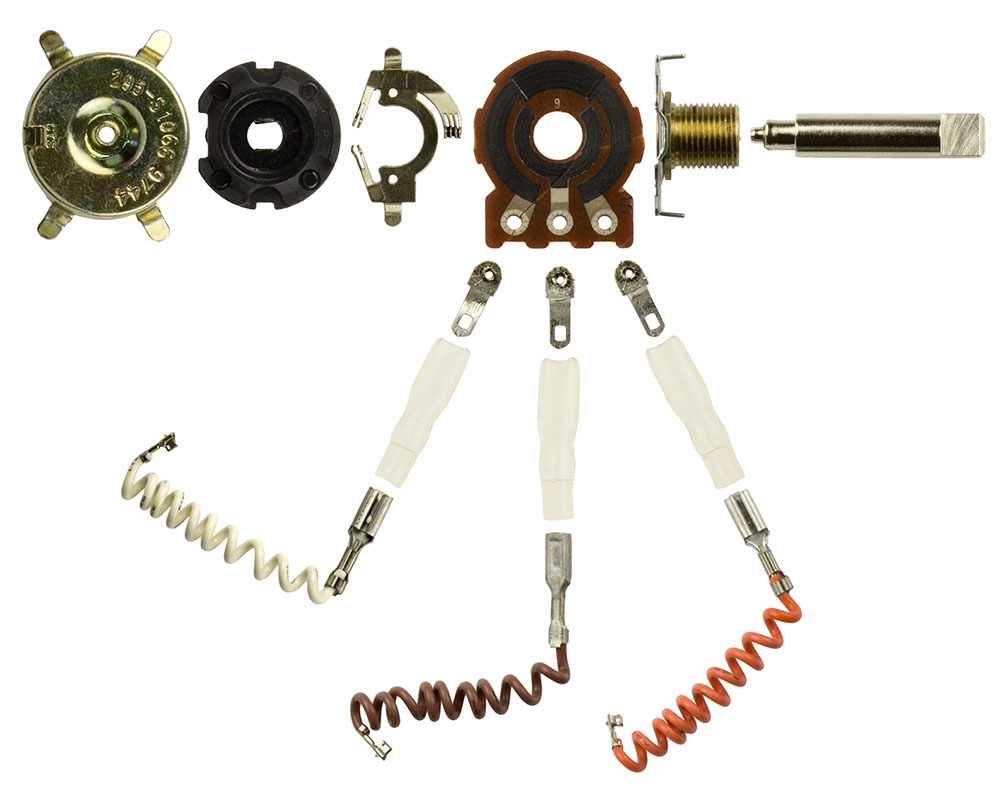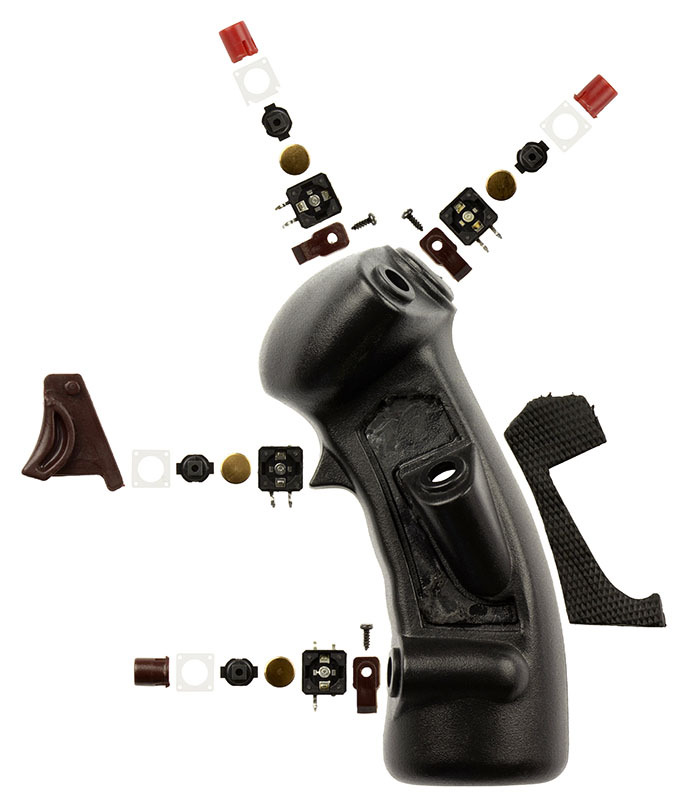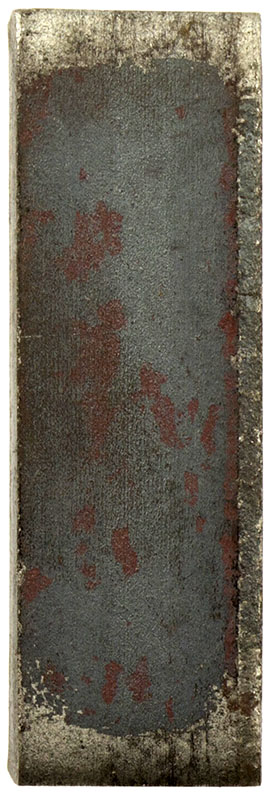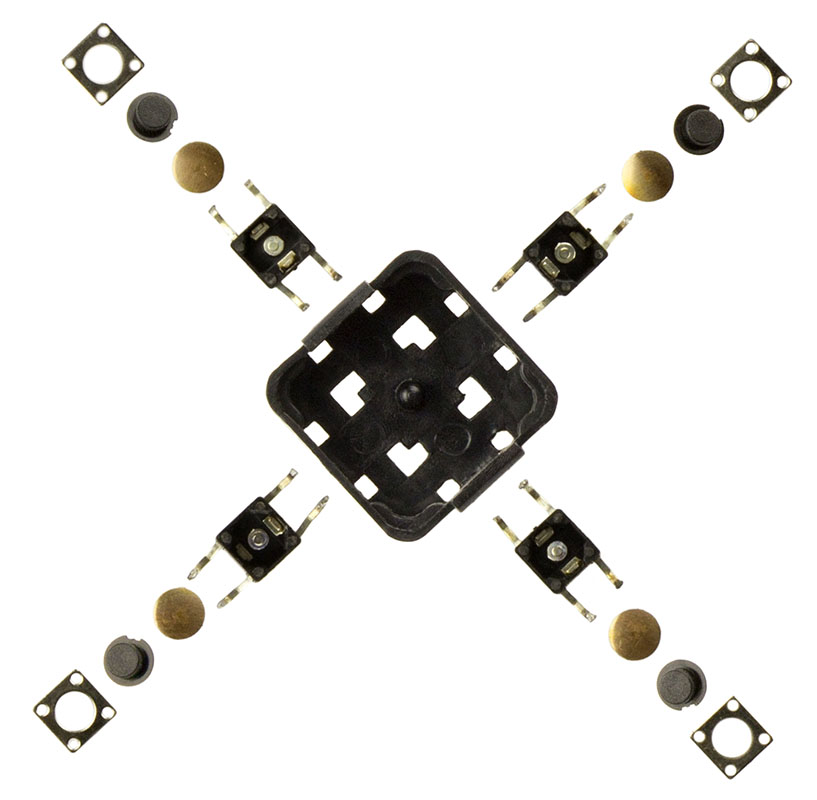
Thrustmasters Are Go!
Another deconstruction finished, and though a picture says more than a thousand words, I still have a few (not a thousand) to say about it. And numbers, those too.
It’s a good thing identity crises aren’t contagious. If they were, this duo would certainly have given me one. In spite of their All-American names and the glorious red, silver and blue labels, these controllers are Made in China. Why this information is always printed in our alphabet and not their own, is still a mystery to me. Have some national pride, for Tao’s sake! That’s all very confusing, but to top it off, these controllers were some of the sturdiest of their time –a trait we’d sooner associate with German than Chinese engineering, stereotypically.
But none of that matters anymore, as Deconstruction is the great equalizer.
Numbers, then.
This baby is a healthy 26,754 by 15,049 pixels (402 MP), making it the third largest in the History of Deconstruction. By the way, Orange Calendar Man took gold a couple of weeks back and I didn’t even notice. I’m sure he would have reminded me, had he known more than half the numb.
These two Thrustmaster controllers had a total of 248 parts, 47 of which were in plain sight before deconstruction. Ergo, I’ve discovered 201 new parts! And you thought deconstruction was a useless exercise…
This would be a perfect time to introduce a new piece of deconstruction terminology: the Surprise Rate (SR). This is defined as the number of newly discovered parts –those that were not in plain sight before deconstruction began- divided by the total number of parts. In this case the Surprise Rate is 81%. Whether that’s high or low remains to be seen, as I’ve only just thought up the SR formula. But it sounds high. Over 50%! Wow! Such percent! Much high! (Orange Calendar Man had an SR of only 10%, by the way, so it was huge, yet hugely unsurprising.)
A few final words.
The Surprise Rate is very useful, but it takes more than math to pinpoint what’s truly surprising. Which in this case are the two crudely cut strips of metal inside the joystick’s base. Probably intended to give the whole thing more heft and stability. Possibly a sneaky way of the Chinese to get rid of nuclear waste, or at least heavy metals. Unfortunately, I can’t tell what metal the things are, as I’ve just deconstructed my spectrometer.
There you have it, 408 words (and counting), far fewer than a thousand. I could go on, but I doubt many have gotten this far. If you have: go watch the pretty pictures now, you’ve earned it!
Earlier posts about this project can be found here, here and here.


